For an injectable drug product, filling your clinical material is a critical step in the transition between preclinical development and in-human trials. See what you need to know when planning your clinical batch, what you need to plan for, and how to strike the right balance between efficiency and quality.
Key insights in this video

Garath Duffy, Head of Supply Chain & Project Management
Garath is a leader at Vetter’s Rankweil clinical filling site and an expert on transitioning injectable medications from preclinical to clinical development. He has extensive experience with a wide range of substances classes, and with guiding drug development teams through the critical pivot from lab to clinic.
Preparing to fill clinical material for your trial
As you take the next step to in-human trials, your focus is on getting your molecule to the clinic as quickly and efficiently as possible – with a secure supply of product for your trial. For an injectable medication, filling a batch of clinical material is a critical step in that process.
As clinical manufacturing expert Garath Duffy explains, that process can be an anxious one for teams releasing their molecule from the R&D environment for the first time. As he says, “for a lot of customers, their molecule is really like their baby. They’ve been nurturing it in their lab environment for so long, in miniscule volumes. There it was all about understanding the molecule. Now it’s about not only producing significantly more of that drug product, but also developing a high quality, scalable filling process that meets all safety and quality requirements for in-human use.”
Budgets, timelines, and future funding goals often further increase the pressure to get everything exactly right on the first clinical filling run. With clinical and financial milstones on the line, parenteral drug developers need to take a smart, strategic approach to filling their clinical trial material – one that not only streamlines their transition to the clinic but also sets the stage for additional downstream successes.
4 key areas to focus on when you’re planning your clinical batch
As Garath notes, many teams with ambitious clinical development plans feel pressured to complete their clinical batch project as quickly as possible. But as you build a critical path for your clinical trial material, make sure you build in time and resources for these four critical steps. They can make the difference between capturing the efficiency of doing it right the first time, and incurring the costs and delays of doing it again.
1. Build a proactive plan: Your clinical batch project is one step toward many more development milestones. Doing it right takes time, and more material than just what you need for clinical trials. Build a schedule that allows for all the additional steps that need to be taken when filling a product that’s meant for human use – and plan for a batch size that accommodates that extra testing and analysis.
2. Prepare your product: Now that you’re getting ready for in-human evaluation and moving to a manufacturing facility, both regulators and your CDMO partner will need to know significantly more about your molecule. Before your batch is filled – and before your IND is filed – be ready for important new tests of your product’s safety, stability, and behavior outside of your lab.
3. Source the right expertise: When it comes time to fill a clinical batch, many find they need many more skill sets to successfully develop and execute their project. Start considering how and where you’ll find the multidisciplinary skills you need, including regulatory/CMC, analytics, process development, project management, aseptic filling, quality assurance, and more.
4. Implement best practices: Ensure the CDMO you’ve chosen is keeping up with current good manufacturing processes (cGMPs), as these requirements are continually evolving. For injectable drug products, through components of this framework are critical: Qualification of the equipment and personnel who will handle your product, validation of the processes use to fill it, and documentation of every step to regulatory standards.
Factor in these four important steps, and your clinical batch project can be off to a smart, strategic start. Duffy’s words for early phase customers: “A successful clinical batch is all about striking the right balance of doing it efficiently, but also doing it right. Make sure you give yourself the time that you need.”

Our library is growing!
Bookmark this page and watch your inbox for more insights on a range of injectable drug manufacturing topics – from aseptic sill-finish, to packaging, to transitioning your product a patient-friendly delivery device.






